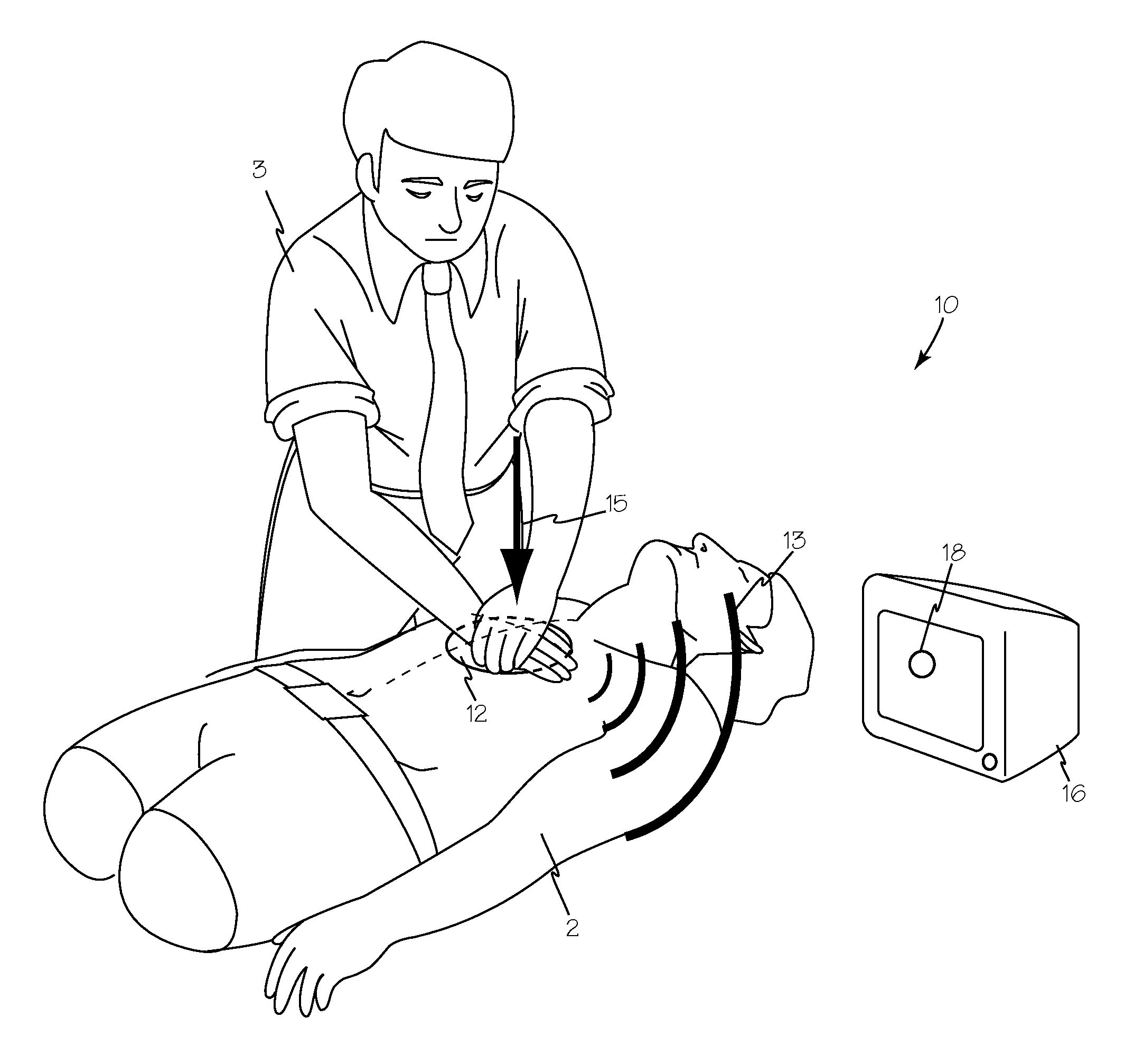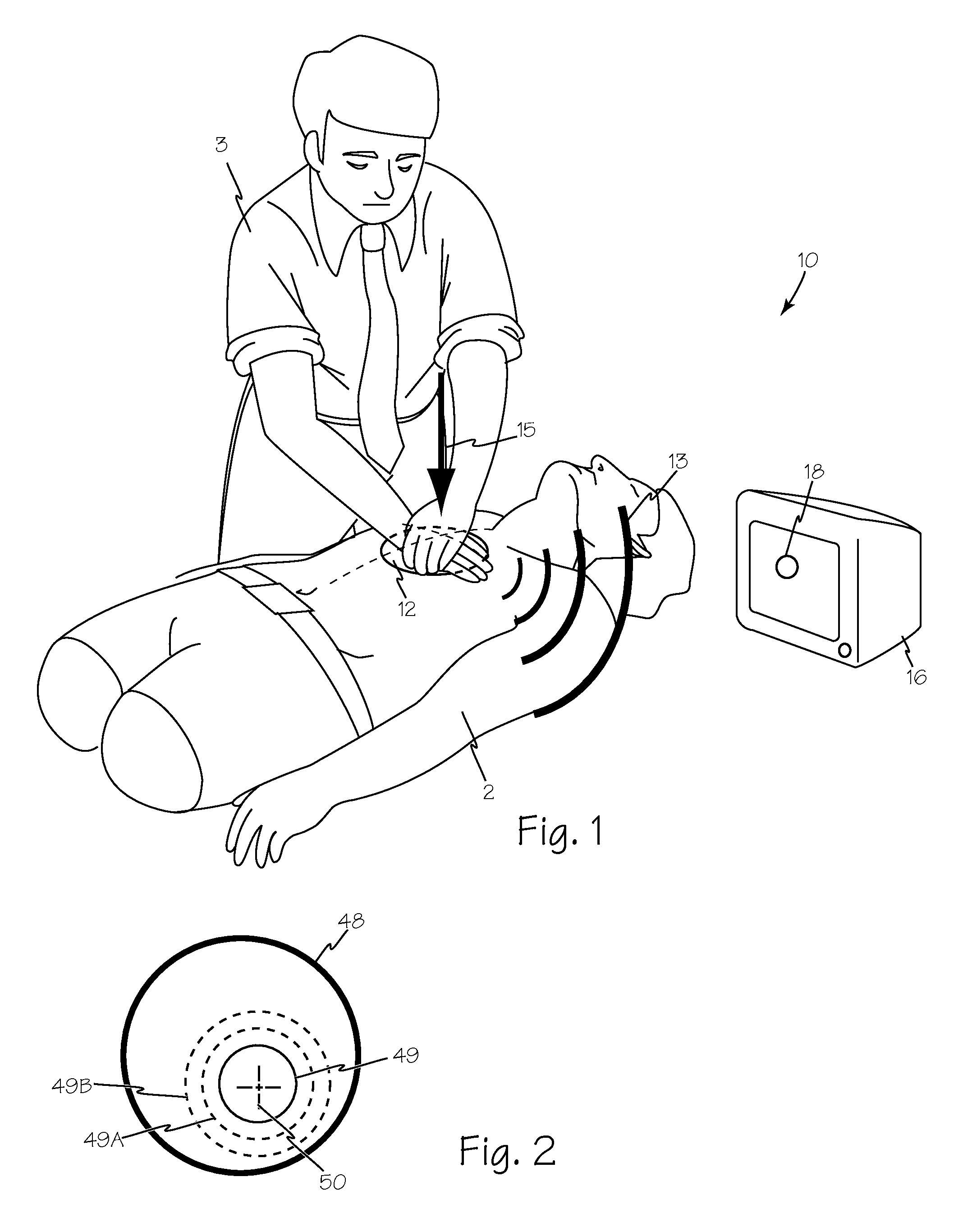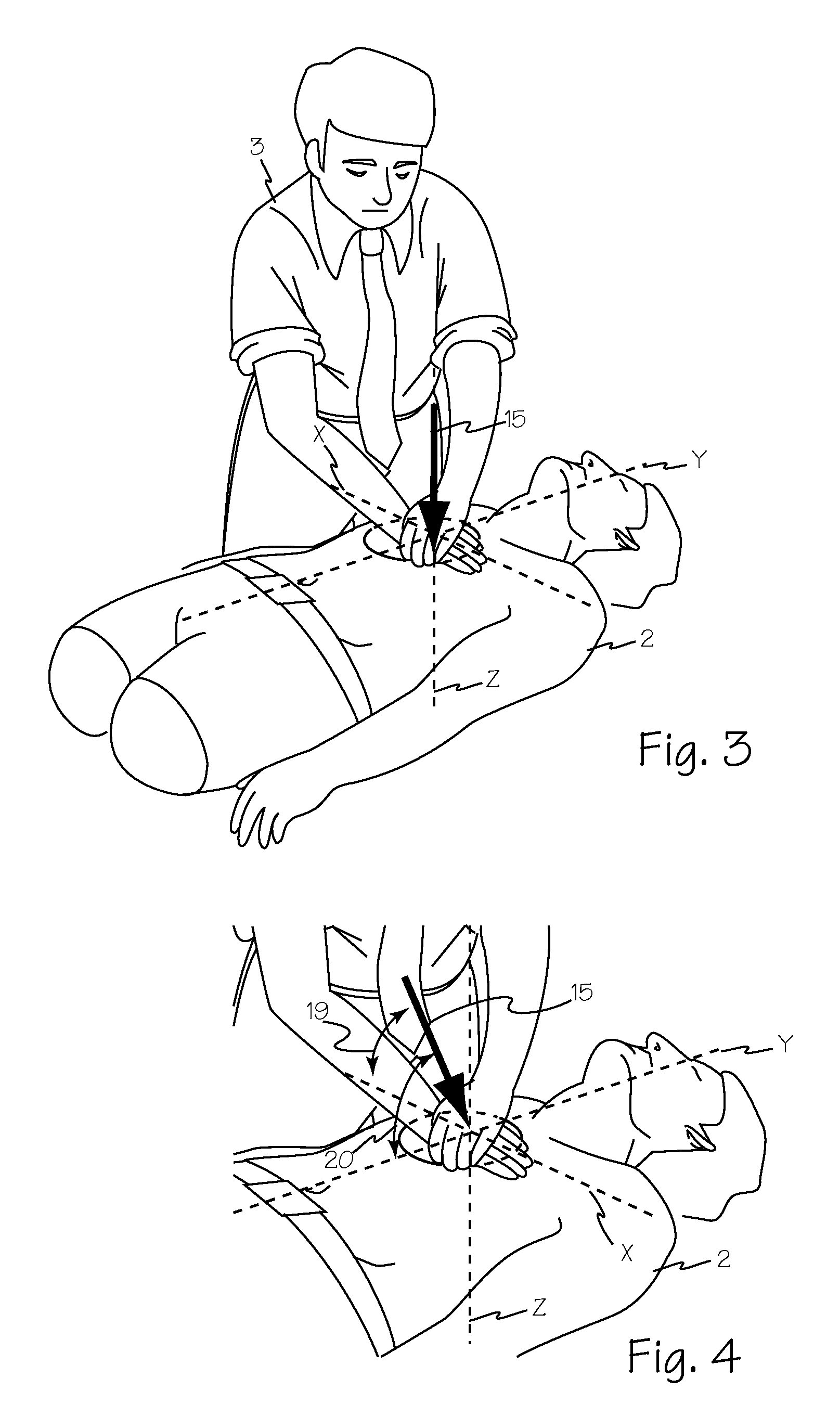Method and apparatus for monitoring manual chest compression efficiency during CPR
a compression sensor and efficiency monitoring technology, applied in the field of cpr, can solve the problems of half of the chest compressions administered by health care professionals being too shallow, and achieve the effects of increasing the measurement capability of the compression sensor, reducing or eliminating horizontal cpr forces, and increasing the reliability of interconnections
- Summary
- Abstract
- Description
- Claims
- Application Information
AI Technical Summary
Benefits of technology
Problems solved by technology
Method used
Image
Examples
Embodiment Construction
[0025]FIG. 1 illustrates cardiac arrest victim 2 receiving CPR from CPR provider 3 using compression measurement and feedback system 10. CPR provider 3 performs manual CPR by applying compression force to compression sensor 12. Signals such as signals 13 representing the magnitude and direction of compression force 15 are transmitted to a coupled AED, monitor, monitor / defibrillator or other suitable apparatus such as AED monitor 16. Signals 13, representing the applied compression force and any other suitable signals may be transmitted to AED 16 using wires, wireless system and use any suitable communications protocol. Monitor 16 receives signals 13 from compression sensor 12 and processes the signals and generates one or more audible and or visual cues such as feedback display 18 to prompt provider 3 to optimize compression force 15 and angle of application to improve the application of manual CPR and to provide more consistent application of manual CPR.
[0026]Referring now to FIG. ...
PUM
 Login to View More
Login to View More Abstract
Description
Claims
Application Information
 Login to View More
Login to View More - R&D
- Intellectual Property
- Life Sciences
- Materials
- Tech Scout
- Unparalleled Data Quality
- Higher Quality Content
- 60% Fewer Hallucinations
Browse by: Latest US Patents, China's latest patents, Technical Efficacy Thesaurus, Application Domain, Technology Topic, Popular Technical Reports.
© 2025 PatSnap. All rights reserved.Legal|Privacy policy|Modern Slavery Act Transparency Statement|Sitemap|About US| Contact US: help@patsnap.com



